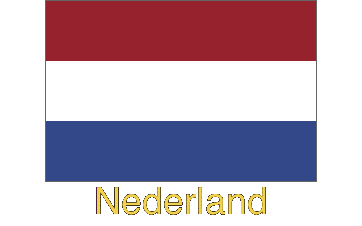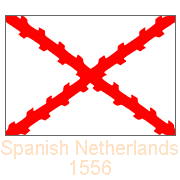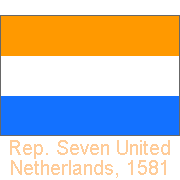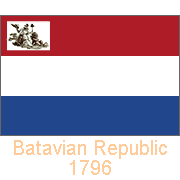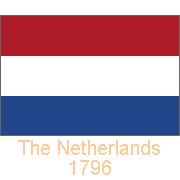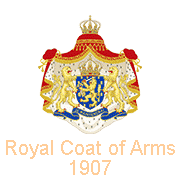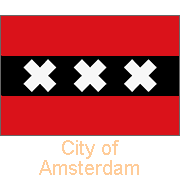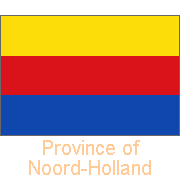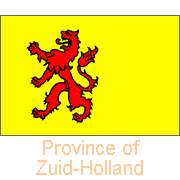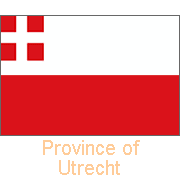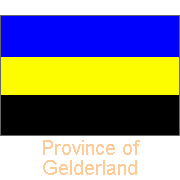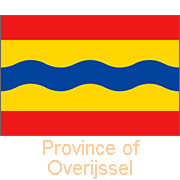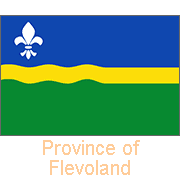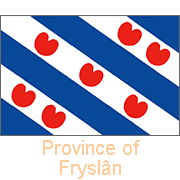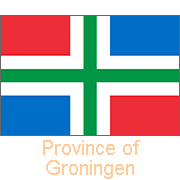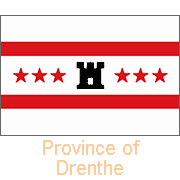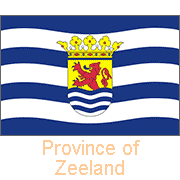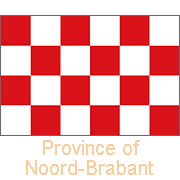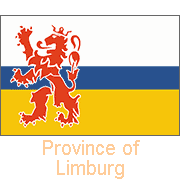Flags from the Netherlands
A Flag history and Provinces of the Netherlands
The flag of the Netherlands is the oldest Republican tricolour in the world: the Prinsenvlag (orange-white-blue) appeared in the struggle against the Spanish under leadership of William I, the Prince of Orange Nassau, in 1579: the seven northern provinces (Holland, Zeeland, Utrecht, Gelderland, Groningen, Friesland, and Overijssel) had formed the United Provinces and declared their independence, leading to the Eighty Years' War with Spain.
you may then send it as a postcard if you wish.
In 1506 the Holy Roman Emperor Charles V had become the ruler of the Burgundian Netherlands, a collection of Imperial and French fiefs ruled in personal union by the House of Valois-Burgundy and their Habsburg heirs in the period from 1384 to 1482. Charles V was also King of Spain and when his son Philip II succeeded him in 1566, the latter became Lord of the Seventeen Provinces, roughly covering the current Netherlands, Belgium, Luxembourg, parts of Northern France France (Artois, Nord) and a small part of Western Germany. The Spanish flag of those days depicted the "Cross of Burgundy" (representing the cross in which Saint Andrew was crucified).
The red-white-blue version was officially established on 14 February 1796, although it had been in use much earlier; one theory is that the orange dye discoloured to a darker hue, and other reason may be because "the colour red was better visible at sea". The flag inspired the revolutionary flag of France and the flag of Russia under Czar Peter the Great in the 18th Century. Orange (for the House of Orange) has remained the National Colour. On 19 January 1795 the "Bataafse Republiek" (Batavian Republic) was proclaimed, under the influence of Revolutionary France. that became the dominant power. On 14 February 1796 it was ordered that the naval flags had a panel on the red stripe featuring the Dutch Maiden, symbolising the Netherlands, bearing a shield with the Roman fasces and a lance crowned with the cap of liberty, with a lion at her feet. In 1806 however, Napoleon Bonaparte proclaimed the "Koninkrijk Holland" (Kingdom of Holland) governed by his brother Louis Bonaparte and the name of the leading province, Holland, was used for the whole country; its flag became the simple tricolour again and when finally the French had to withdraw and the kingdom of the Netherlands was proclaimed under King Willem I, it remained the flag of the Netherlands.
The provincial flags have designs that often go back for centuries and its designs and colours recall the heraldic symbols of the various duchies, counties and other lands that make up the present country. Almost every city, town and municipality has its own flag and Coat of Arms. The Arms often depict the "Nederlandse Leeuw", the Dutch Lion, a symbol of strength. The symbol of a lion carrying a sword was already used by Charles V on the seals he used for his Dutch territories, and the Spanish and Austrian overlords in the Southern Netherlands and the Republic of the Seven United Netherlands used it as well. It appeared on the Arms of the Batavian Republic and on the present National Arms.


